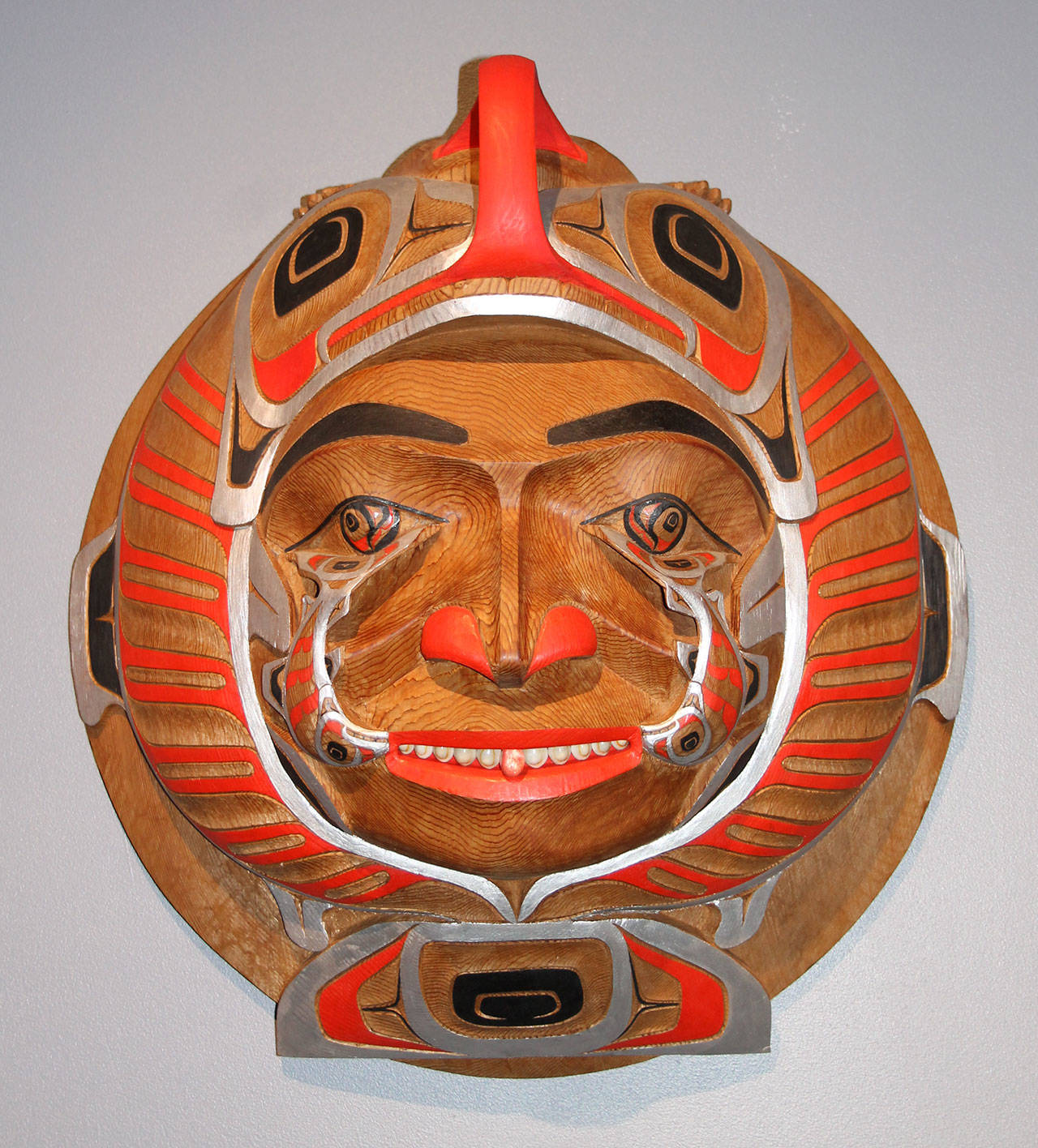Editors note: a previous version regretfully did not clarify the names of the tribes of the artists, implying that they were all Coast Salish, and incorrectly called Susan Points “Interaction” totem poles rather than house posts.
First Nation artists will be honored at the San Juan Islands Museum of Art’s latest exhibit, Emergence.
Over 30 artists, several from Coast Salish Nations, will be represented. Some of the artists have recent close ties to the San Juan Islands.
“I went to Camp Nor’Wester on Lopez as a kid,” said Calvin Hunt, Kwakiutl artist whose work is part of the exhibit. The
San Juan Museum of Art brings this collection together from five different private collections Emergence opened May 26, and will be shown until Sept. 4.
Besides Hunt, artists featured in the exhibit are Coast Salish artists Susan Point, and Simon Charlie, Kwakwaka’waka artists Rande Cook and Beau Dick, Tsimshian artist Roger Gray, Wei Wai Kum artist Troy Roberts, Nu Chah Nulth artist Art Thompson, Inuit artist Kanaginak Pootoogook, and others.
Museum hours are Thursday through Monday, 11 a.m – 6 p.m. Admission is $10 for adults, and children 18 and under are free. The third Monday of every month is free to the public.
The collection includes totems, sculptures, masks, and other carvings as well as a canoe in the museum’s front exhibit hall. An all- volunteer staff installed the exhibition, including all lighting, moving, construction as well as research and labeling. A technology savvy crew added a bar to the label of each piece, allowing attendees to use their smartphones to scan the bar to connect to the story about the artist and the art.
Hunt grew up in Victoria and continues to be involved in Camp Nor’Wester. He sponsors attendance for two children each year. Hunt is also in the process of designing a totem pole for Nor’Westers current location on Johns Island. The project will take at least a year, Hunt is hoping to finish it in time to dedicate it during next year’s potlatch.
Point has also carved a house pole now located in the islands.
Interaction, the name of the poles that can be found at the Port of Friday Harbor, was dedicated in 2004. The sign describing Interaction states the poles speak to the interaction between humans and wildlife, and the importance of caring for the environment.
Point has been credited with re-establishing Coast Salish art in both Canada and the U.S. According to the Spirit Wrestler Gallery biography, Canada gave one of her pieces, The Beaver and the Mink to the Smithsonian Institute when it opened the National Museum of the American Museum.
Like Point, Hunt is a multi-media artist, creating jewelry, and working in silver, bronze and stone.
“Wood carving is Hunt’s favorite medium,” he said.
He thrives off lengthy, year-long projects like totem poles, that he can immerse himself in.
Hunt comes from a long line of traditional carvers, his grandfather was the re-known artist Chief Mungo Martin of the Kwakwaka’waka Nation on Vancouver Island.
Hunt explained that while he can be inspired by some of the new contemporary work, his heart is with the traditional style of his ancestors.
“Carving is part of the Hunt family legacy,” he said.
For more information about Emergence, visit the San Juan Island Museum of Art at www.sjima.org.



